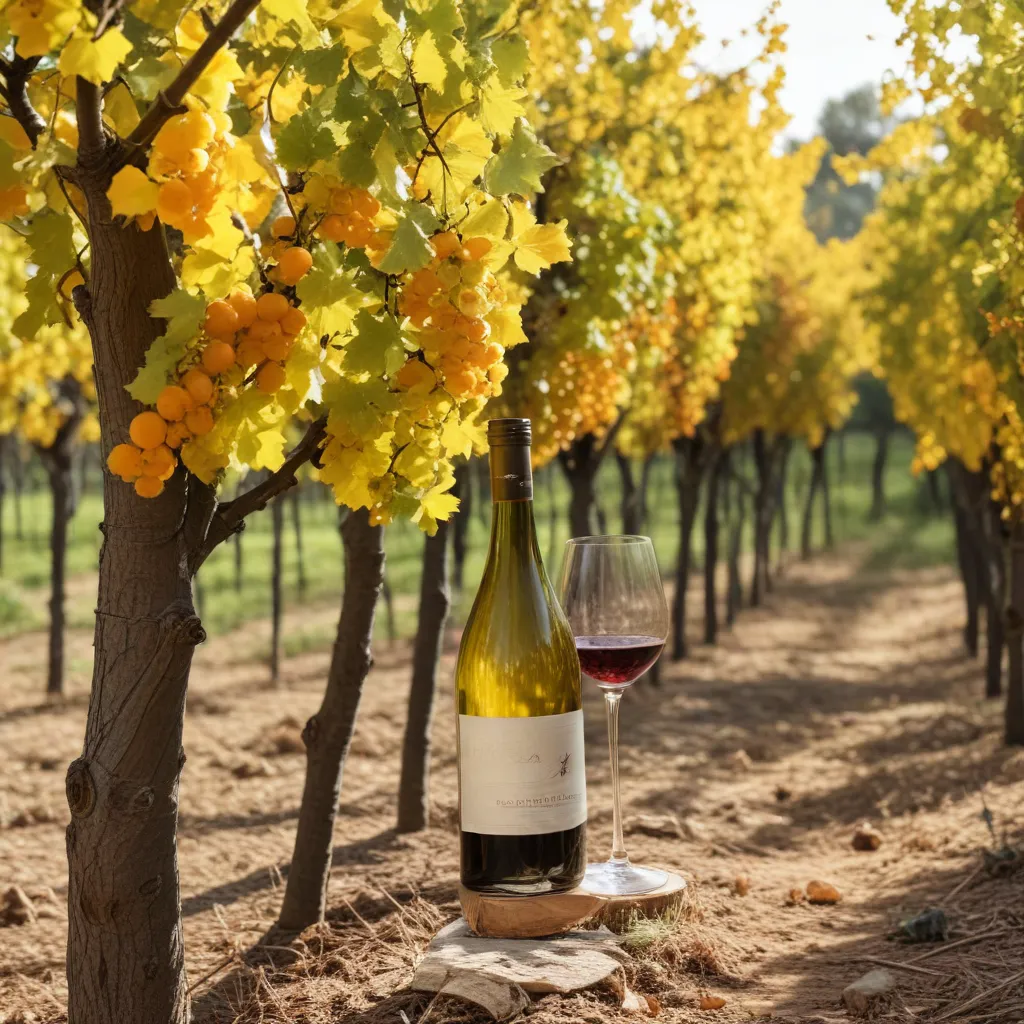
The wine industry is constantly evolving, with new styles, production methods, and consumer preferences emerging. Two significant trends that have gained considerable traction in recent years are the rise of natural wines and the growing popularity of orange wines. These distinct categories offer wine enthusiasts a fresh perspective on the diverse world of viticulture and enology.
Natural Wine Exploration
Natural wines, often characterized by minimal intervention in the winemaking process, have captivated the attention of both casual drinkers and industry connoisseurs. These wines are typically made with organically or biodynamically grown grapes, with little to no addition of sulfur dioxide or other additives. The result is a unique, sometimes unpredictable, and often highly expressive style that reflects the inherent character of the grape and the terroir.
One of the key attributes of natural wines is their emphasis on transparency. Winemakers in this movement often eschew the use of fining and filtering agents, allowing the wine to remain cloudy and unrefined. This approach, while challenging traditional wine production methods, aims to preserve the wine’s natural complexity and nuanced flavors. The lack of extensive processing also means that natural wines often exhibit a more pronounced acidity and minerality, which can provide a refreshing and invigorating drinking experience.
The growing popularity of natural wines has been driven by a shift in consumer preferences, as many wine drinkers seek more authentic and environmentally-conscious products. The focus on sustainable and biodynamic farming practices, as well as the rejection of excessive manipulation in the cellar, has resonated with a new generation of wine enthusiasts who value transparency and authenticity.
Orange Wine Phenomenon
Alongside the rise of natural wines, the phenomenon of orange wines has also captivated the attention of the wine world. These “skin-contact” whites, also known as amber or ramato wines, are produced by leaving the grape skins in contact with the juice during fermentation, resulting in a distinctive hue and flavor profile.
Orange wines typically exhibit a range of colors, from pale amber to deep, burnished orange. The extended skin contact imparts a rich, textural mouthfeel and can introduce notes of dried fruit, spice, and even tannins – characteristics more commonly associated with red wines. This unique style of winemaking has roots in the ancient winemaking traditions of regions like Georgia, Italy, and Slovenia, where the practice of making “orange” wines has been celebrated for centuries.
The rise in popularity of orange wines can be attributed to several factors. As wine consumers become more adventurous and open to exploring new styles, the intriguing color and complex flavors of orange wines have captured their curiosity. Additionally, the association of orange wines with a more natural and artisanal approach to winemaking has resonated with the growing interest in transparency and sustainability in the industry.
Consumer Preferences and Behaviors
The emergence of natural and orange wines has been driven, in part, by a shift in consumer preferences, particularly among younger wine drinkers. These consumers are often more conscious of the source of their food and beverages, seeking out products that align with their values of environmental stewardship and authenticity.
Many wine enthusiasts are drawn to natural and orange wines for their perceived health benefits, as these styles generally contain lower levels of sulfites and other additives. The avoidance of synthetic chemicals and a focus on organic or biodynamic farming practices appeal to health-conscious consumers who are mindful of what they consume.
In addition to the health and environmental considerations, the unique flavors and textures of natural and orange wines have captivated the interest of adventurous drinkers. These consumers are often eager to explore the diverse range of styles and expressions within these categories, seeking out new producers and regions to discover.
The rise of natural and orange wines has also influenced purchasing habits and consumption patterns. These wines are often found in specialized wine shops, independent restaurants, and online marketplaces that cater to a more discerning and engaged customer base. Consumers are willing to invest in these unique offerings, creating a growing demand that has prompted a broader industry response.
Industry Implications and Outlook
The increasing popularity of natural and orange wines has presented both challenges and opportunities for producers, retailers, and the wine industry as a whole. Winemakers who embrace these styles must navigate the complexities of natural winemaking, which can involve higher risks and more unpredictable outcomes compared to conventional production methods.
For producers, the focus on minimal intervention and the emphasis on terroir expression can require significant investments in education, training, and infrastructure. Mastering the nuances of fermentation, maceration, and maturation without the use of common stabilizing agents is a delicate balance that requires a deep understanding of the winemaking process.
On the retail side, the growing demand for natural and orange wines has led to changes in the way these products are presented and marketed. Wine shops and restaurants must educate their staff to guide consumers through the unfamiliar styles and provide recommendations that cater to the diverse preferences of this consumer base.
As the natural and orange wine movements continue to evolve, industry experts predict that these trends will have a lasting impact on the wine landscape. The increased consumer interest in transparency, sustainability, and unique flavor profiles is likely to drive further innovation and diversification within the industry. Producers who can navigate the challenges of natural winemaking and offer compelling, quality-driven products are poised to capitalize on this growing market segment.
Ultimately, the rise of natural and orange wines reflects a broader shift in consumer attitudes and a desire for more authentic, terroir-driven experiences. As the wine industry adapts to these emerging trends, wine enthusiasts can look forward to an ever-expanding array of exciting and thoughtfully-crafted offerings that promise to elevate the joy of wine discovery.
